Renewable Energy-Based Design for the West Terminal of Tabriz Bus Hub: A Sustainable Approach to Urban Transportation in Iran
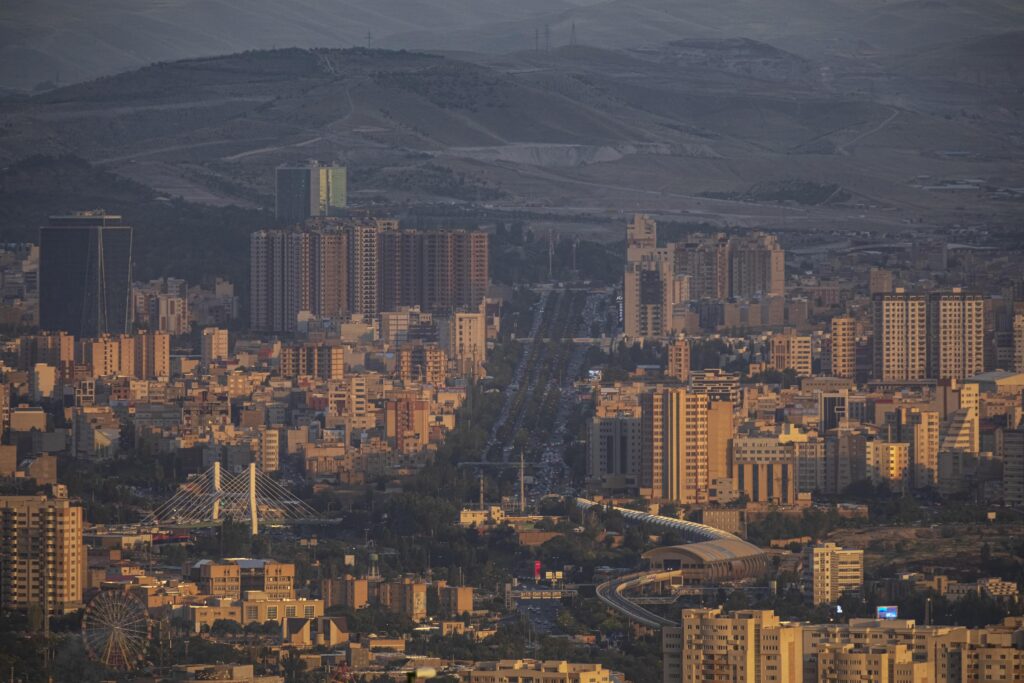
By Samaneh Mohammadi Kalan, Master’s Student in Architecture Design at Azad University of Tabriz, Iran.
As part of my Master’s studies, I conducted a research project titled “Designing the West Terminal of Tabriz Bus Hub with a Renewable Energy Approach.” The main objective of my research is to propose a renovation plan for the old west bus station of Tabriz. Tabriz is a city in East Azerbaijan province, in northwestern Iran. It is the sixth-most-populous city in Iran. In addition, Tabriz is the most significant economic hub and metropolitan area in northwest Iran.
Figure 1: Overview of the proposed West Terminal of Tabriz Bus Hub

Source: Author’s design, 2023.
This study aims to design a bus station incorporating renewable energy technology to address the issue of excessive fossil fuel consumption and reduce fossil-fuel-originated pollution. The proposed project is multifaceted and can be divided into several branches; however, in this research, the economic and environmental aspects will be given priority. The passenger terminal is a crucial element of urban transportation and is highly responsible for air pollution, requiring, thus, more attention and investment in renewable energy technologies. Furthermore, Iran has significant renewable energy resources that can be leveraged to modernise and enhance the quality of transportation services, leading to a stable and sustainable system.
Figure 2: Bird’s-eye view of the project and surrounding area

Source: Author’s design, 2023.
This hub provides intercity and international transportation by bus. To meet all the needs of passengers, the complex offers various facilities such as shopping centres, medical centres, hotels, cafes and restaurants, and banks for exchanges. Additionally, it provides necessary amenities for drivers, such as rest areas, repair shops, fuel stations, and bus washes, all conveniently located. These amenities offer passengers a sense of ease and comfort during their journey. The research hypotheses of this project are as follows.
Figure 3: Bird’s-eye view of the project

Source: Author’s design, 2023.
Research hypotheses
Hypothesis 1: Designing a zero-energy building.
This means that the West Terminal of Tabriz Bus Hub will be energy self-sufficient while exporting the excess energy to the power grid. The approach to using renewable energy sources differs based on usage conditions, regional conditions, and different communities. In this project, it is clear that energy consumption in cold regions such as Azerbaijan is higher and more long-term for heating purposes. In addition, pollution from automobiles, including buses in the Terminal, is another factor in air pollution, which emits pollutants such as SO2 (sulfur dioxide), NO2 (nitrogen dioxide), PM10 (particulate matter 10), CO (carbon monoxide), etc. Therefore, minimising the facility’s reliance on other fuels and simultaneously producing energy while providing substitute oxygen will be the achievements of this project. SO2 is a gas produced from burning fossil fuels and can cause respiratory issues and acid rain. NO2 is a toxic gas emitted by vehicle exhausts and can cause respiratory problems. PM10 refers to tiny particles in the air that can be inhaled and cause health problems such as lung damage and heart disease. CO is a gas produced from burning fossil fuels and can cause headaches, nausea, and even death in high concentrations.
Hypothesis 2: Forming a cohesive whole through design.
Each component of this facility, such as the double-shell facade of the main building, plays a critical role. This technology, called an air filter, will prevent heat loss from the facility. Using glass facades in another stage will lead to capturing and maintaining sunlight in the cold season. Another action is using greenhouse spaces inside the halls to ventilate and purify the air. The use of solar panels compatible with the structure of the area, other solar heating systems, wind generators on the roof to meet half of the facility’s energy needs, rainwater collector systems made of recyclable materials and supplying part of the facility’s water needs, intelligent electronic systems, and other advanced technologies will lead to achieving the project’s objectives.
Hypothesis 3: long-term benefits of the project.
During the implementation of the project, the issue of the initial cost will arise, but it is essential to consider the project’s long-term benefits. Achieving the goal of a zero-energy building will lead to energy independence, significant savings in energy costs, and reducing greenhouse gas emissions, positively impacting the environment. In addition, the use of modern technologies in the construction and operation of the facility will contribute to the development of new technologies and the creation of employment opportunities in this field.
The enclosed spaces of the complex are divided into three major sections: the terminal hall and the drivers’ building. Each of these spaces is further subdivided into smaller units as follows. A transportation museum is also projected.
- The terminal hall: Intercity, international, and VIP passenger halls.
- Drivers’ building: Waiting room, meeting room, drivers’ hotel, and administrative sections.
Figures 4 and 5: The transportation museum
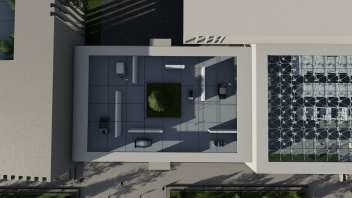
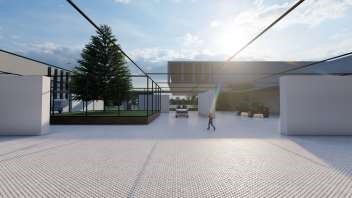
Source: Author’s design, 2023.
Figures 6 and 7: The Drivers’ building
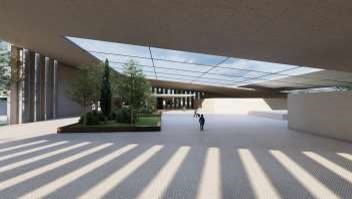
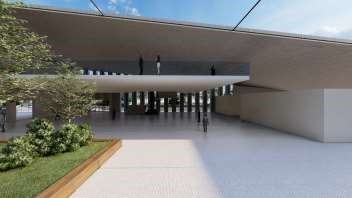
Source: Author’s design, 2023.
Figures 8 and 9: The terminal hall
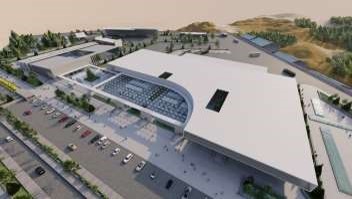
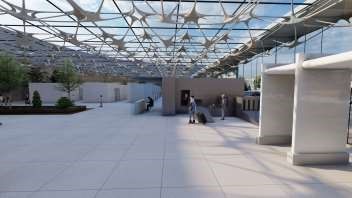
Source: Author’s design, 2023.
Concluding remarks
This research is of great importance due to the significant increase in global energy consumption in recent decades, leading to the depletion of non-renewable energy resources and the harmful environmental pollution caused by the combustion of fossil fuels. Thus, it is crucial to focus on preserving our future and protecting energy resources and the environment for future generations. Developed countries have been replacing fossil fuels with renewable energies, positively impacting the economy and the environment and ultimately improving human life quality. This substitution provides a solution to fulfil many urban needs, particularly in large-scale projects with high consumption, such as transport terminals, while simultaneously reducing their negative impact.
The importance of a renewable energy-based design approach in regional transportation hubs cannot be overstated. The proposed renovation plan for the West Terminal of Tabriz Bus Hub offers a multifaceted solution to address critical energy consumption issues. Designing a zero-energy building with the support of modern technologies in the construction and operation of the facility will not only contribute to the environment and regional socio and economic development. This includes creating employment opportunities and facilitating business expansion in the surrounding area of the Terminal and beyond. This project represents an innovative and sustainable solution that could serve as a model for other regional transportation hubs in Iran and beyond.
Figure 10: A Glimpse of detail of the Terminal’s interior.

Source: Author’s design, 2023.
References*
Lotfi Nezhad, Behnam and Moatar, Faramarz. (2015). Utilising Renewable Energies in Solar Air Conditioning and Its Effects on Energy Consumption Optimization. International Research Conference on Science and Technology.
Gharaei Ghahi, Shabnam and Ghasemi Ghasemond, Yousef. (2016). The Impact of Renewable Energy on the Environment. The 10th Congress of Pioneers of Progress, Tehran.
Abazari, Ali and Hosseinzadeh, Hossein. (2016). Renewable Energy as a Way to Reduce Dependence on Fossil Fuels. International Research Conference on Science and Technology. SID.
Karami, Fataneh. (2015). Zero-Energy Building Design Using Renewable Energies. International Research Conference on Science and Technology. SID.
Suleimani, Ahmad and Abrumand Azar, Parisa. (2015). Investigating Renewable Energies and Their Environmental Impacts in Iran. International Research Conference on Science and Technology. SID.
Quesada, G., Rousse, D., Dutil, Y., Badache, M., & Hallé, S. (2012). A comprehensive review of solar facades. Opaque solar facades. Renewable and Sustainable Energy Reviews, 16(5), 2820-2832.
*These references have been applied to reinforce the comprehensive research for the project “Designing the West Terminal of Tabriz Bus Hub with a Renewable Energy Approach.”
About the Author
Samaneh Mohammadi Kalan is a 25-year-old student pursuing a Bachelor’s degree in Architecture Design at Azad University of Tabriz, Iran. She has extensive experience in remote 3D and interior designing, specialising in minimal and nature-oriented styles. Samaneh is particularly interested in working on projects that prioritise sustainable development and environmental conservation.